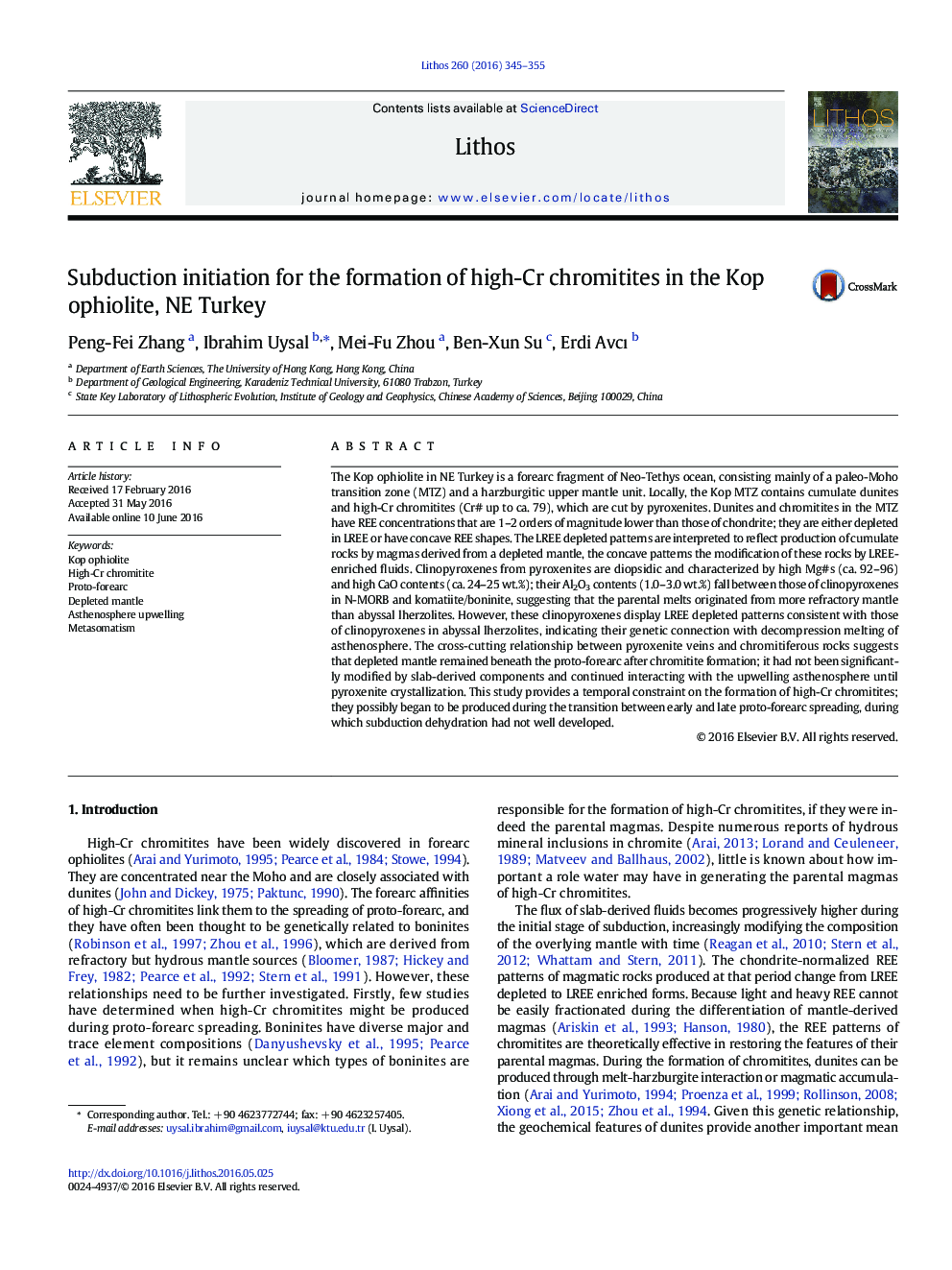| Article ID | Journal | Published Year | Pages | File Type |
|---|---|---|---|---|
| 6440357 | Lithos | 2016 | 11 Pages |
Abstract
The Kop ophiolite in NE Turkey is a forearc fragment of Neo-Tethys ocean, consisting mainly of a paleo-Moho transition zone (MTZ) and a harzburgitic upper mantle unit. Locally, the Kop MTZ contains cumulate dunites and high-Cr chromitites (Cr# up to ca. 79), which are cut by pyroxenites. Dunites and chromitites in the MTZ have REE concentrations that are 1-2 orders of magnitude lower than those of chondrite; they are either depleted in LREE or have concave REE shapes. The LREE depleted patterns are interpreted to reflect production of cumulate rocks by magmas derived from a depleted mantle, the concave patterns the modification of these rocks by LREE-enriched fluids. Clinopyroxenes from pyroxenites are diopsidic and characterized by high Mg#s (ca. 92-96) and high CaO contents (ca. 24-25Â wt.%); their Al2O3 contents (1.0-3.0Â wt.%) fall between those of clinopyroxenes in N-MORB and komatiite/boninite, suggesting that the parental melts originated from more refractory mantle than abyssal lherzolites. However, these clinopyroxenes display LREE depleted patterns consistent with those of clinopyroxenes in abyssal lherzolites, indicating their genetic connection with decompression melting of asthenosphere. The cross-cutting relationship between pyroxenite veins and chromitiferous rocks suggests that depleted mantle remained beneath the proto-forearc after chromitite formation; it had not been significantly modified by slab-derived components and continued interacting with the upwelling asthenosphere until pyroxenite crystallization. This study provides a temporal constraint on the formation of high-Cr chromitites; they possibly began to be produced during the transition between early and late proto-forearc spreading, during which subduction dehydration had not well developed.
Related Topics
Physical Sciences and Engineering
Earth and Planetary Sciences
Geochemistry and Petrology
Authors
Peng-Fei Zhang, Ibrahim Uysal, Mei-Fu Zhou, Ben-Xun Su, Erdi Avcı,
